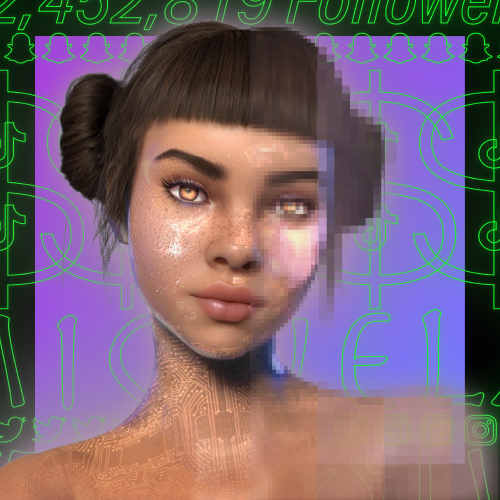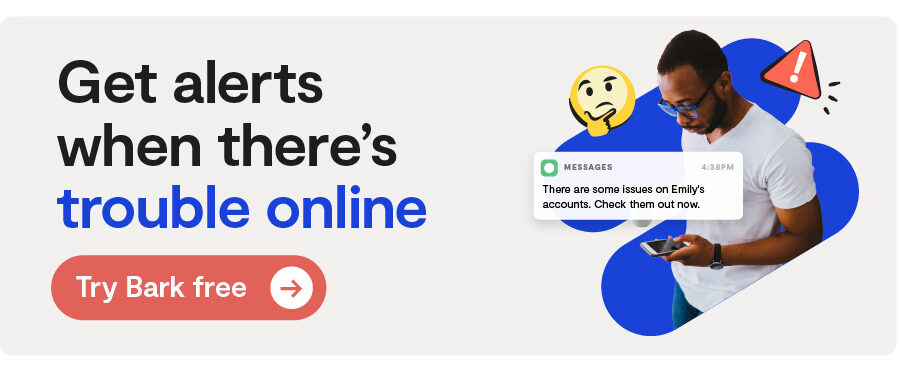
Learn about the latest Instagram updates here.
On December 4, 2019, a computer-generated persona named Kenna began a product development internship at the popular makeup brand Essence Cosmetics. A photo of herself, along with the caption “First day at work, yay,” was uploaded to her personal Instagram account. It’s a relatable experience for millions of young people today. But there’s one major difference in this story: Kenna didn’t have this experience. In fact, Kenna isn’t even a person. She’s a “CGI influencer” (created with computer-generated imagery) designed to help Essence Cosmetics market their products.
The online presence of a computer-generated millennial doesn’t differ much from any other popular young person’s. They get bored and decide to dye their hair in the middle of the night. They take cheesy kissing pictures with their significant others. They drop links to their (usually bad) new singles. But they’re also markedly different in a number of troubling ways — especially for kids who are just learning to navigate the online world.
What Are CGI Influencers?
Real-life kids overwhelmingly want to become “influencers,” which are social media personalities with huge followings who are paid to promote brands or products — usually things like cosmetics, travel, food, fitness, and fashion. According to a 2019 survey, 86% of members of both Generation Y and Z said they would be willing to post sponsored content to their social media profiles for money. The majority also said they would like to become influencers themselves one day.
While it might seem extreme to create an entire virtual person (it takes hours of 3D modeling work to create one CGI post), it’s really just taking popular Instagram techniques one step further. The platform already has a reputation for being the place where people broadcast their most flattering and touched-up selfies. Creating even more “perfect” profiles using CGI is simply a response to that pressure to have a curated online persona.
When you get into the nitty-gritty of the influencer world, the increasing popularity of CGI influencers makes even more sense. The rules around posting promotions on social media are strict, and influencers can charge thousands of dollars for a single post. Naturally, brands — or even virtual influencer talent agencies — are starting to create personas over which they have total control without needing them to sign a single contract.
One case-in-point is Lil Miquela. This computer-generated person was named one of TIME’s 25 most influential people on the internet. In one Instagram post, she thanked the popular hair-care brand Ouai for “keeping [her] strands silky smooth.” Lil Miquela does not have real hair, so her testimony is misleading. But she’s able to recommend the product anyway because her managers are free to speak for her. As a result, her followers can be manipulated into buying products that will never live up to their marketing.
How Can They Affect Your Kid?
So, why does this all matter? The problem is that children can’t always distinguish between a CGI Instagram star and a real one. While influencers like @noonoouri look more like anime characters than people, others like @shudu.gram are eerily human-like. Still others, like @nickillian, are rumored to be CGI but refuse to clarify one way or another. It can become even more confusing when computer-generated influencers pose side-by-side for a photoshoot with human models. Pixel-perfect by nature, they’re even more glamorous than the people who are actually on-set, putting the unrealistic beauty standards promoted on social media even further out of reach.
Clearly identifying these users as “not real” is key. “If I kept her a secret, the majority of people might think she's a real person,” Cameron-James Wilson, the creator of @shudu.gram, told USA Today about his influencer’s identity. “There needs to be a level of awareness about that with technology. I think that has the potential to be abused.” But Wilson added that both types of influencers can coexist — as long as they’re each marketed as exactly what they are.
Human influencers have one thing over their CGI counterparts, however. They can be more compelling precisely because they do have flaws, which make them more endearing than a computer-generated persona. Most people identify more with someone who’s being vulnerable, whether they’re going through a public scandal, opening up about a difficult situation, or just complaining about a bad hair day. And although the social media accounts of real people are still highly curated, being your authentic self online is becoming increasingly popular.
While this new wave of influencers can mimic life’s “messiness” by complaining about a rough breakup or getting emotional about being hacked, it’s just not the same as a real person going through real-life experiences.
What Should You Do?
Talking about CGI Instagram accounts is a great way to teach your kid that not everything you see online is exactly what it looks like. Someone’s “highlight reel” on VSCO isn’t necessarily representative of their actual life. An adult can pretend to be a child online in an attempt to build an inappropriate relationship. A viral video of a public figure saying something shocking might simply be a “deep fake.” An Instagram star isn’t always who they seem to be — that perfectly curated feed might just be the result of hours of work on a computer.
Conversations about CGI influencers and putting in place good digital habits are key parts of your child’s developing relationship with technology. It’s also important to help keep them safe online by monitoring their online activity. Bark monitors for potential issues on more than 24 social media platforms, as well as texts, chat, email, and YouTube. for a free, one-week trial of our award-winning monitoring service.
Bark helps families manage and protect their children’s digital lives.






